#Famen
Explore tagged Tumblr posts
Photo
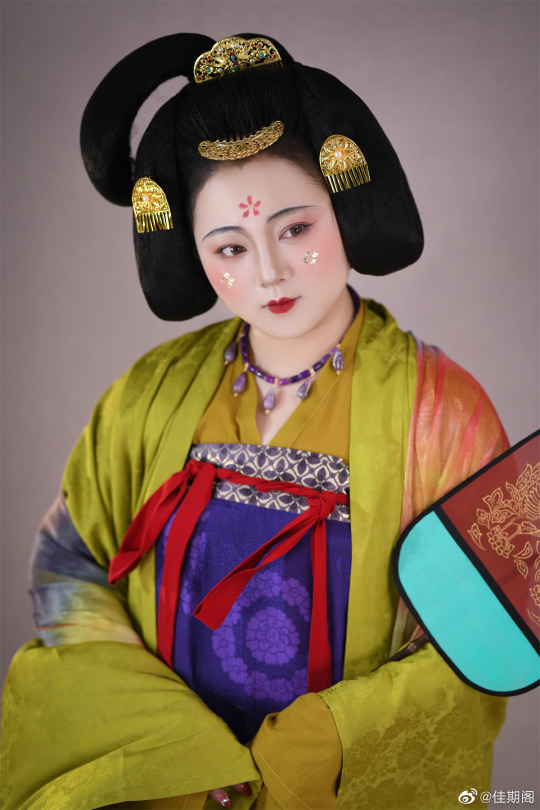
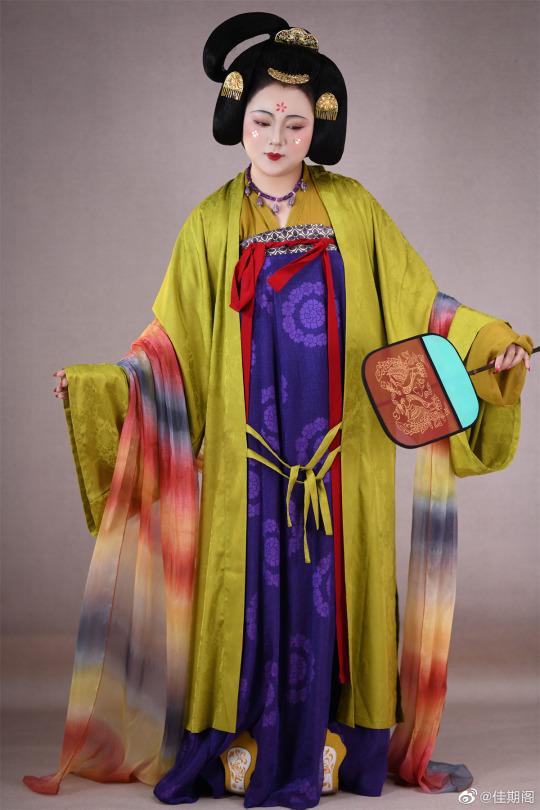
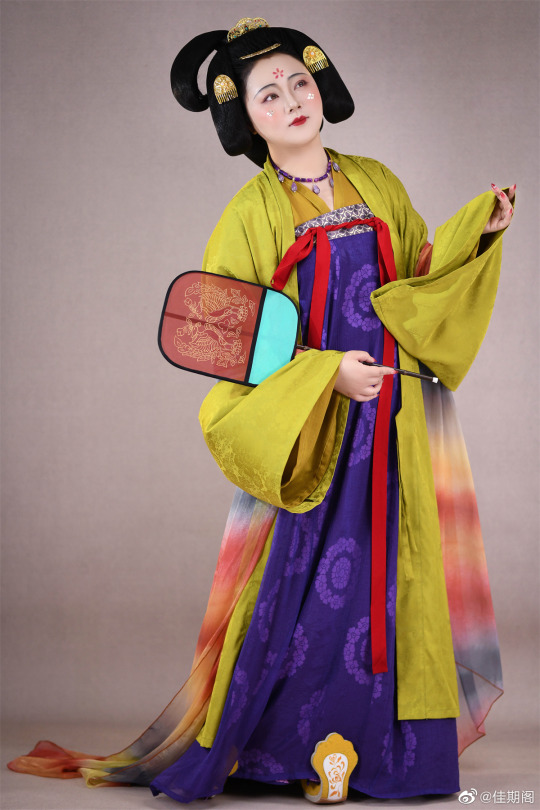

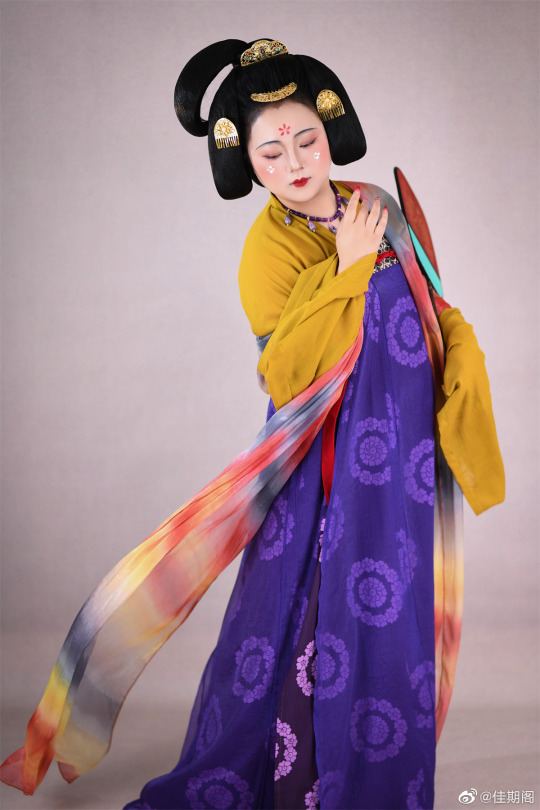
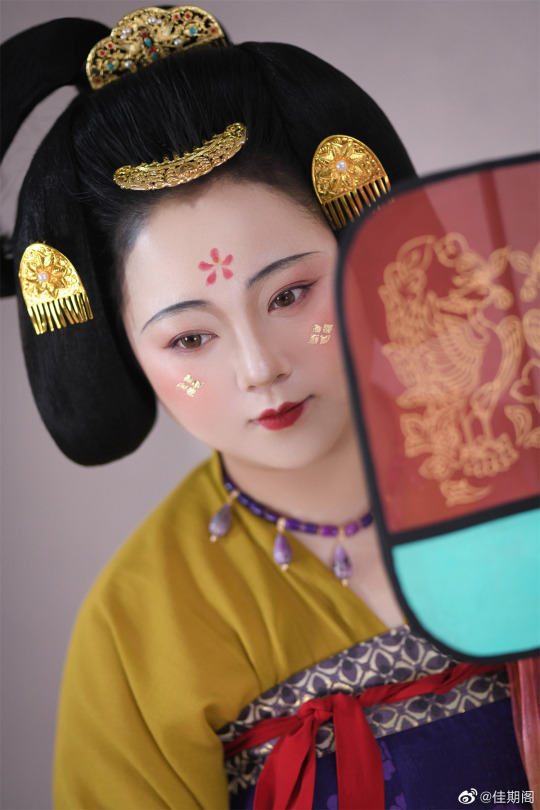
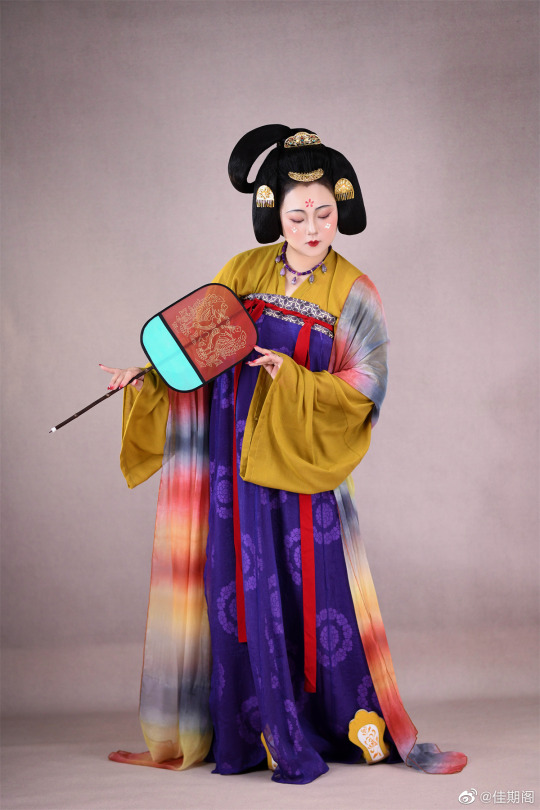
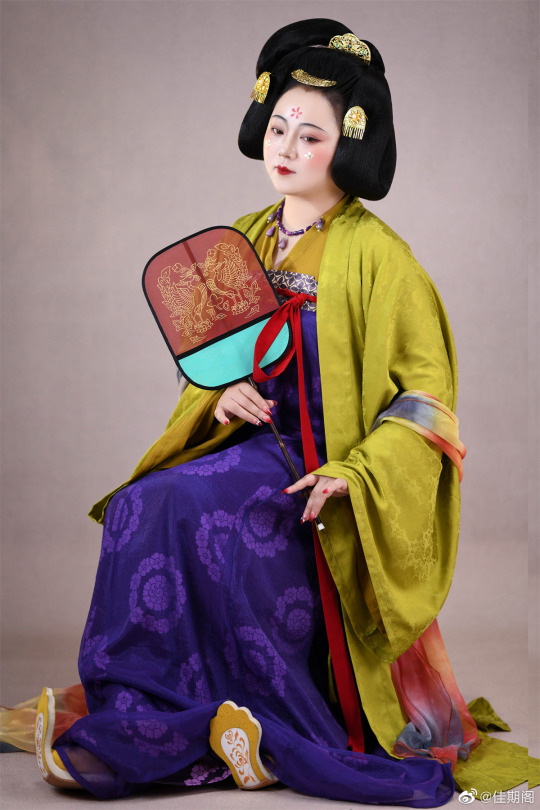
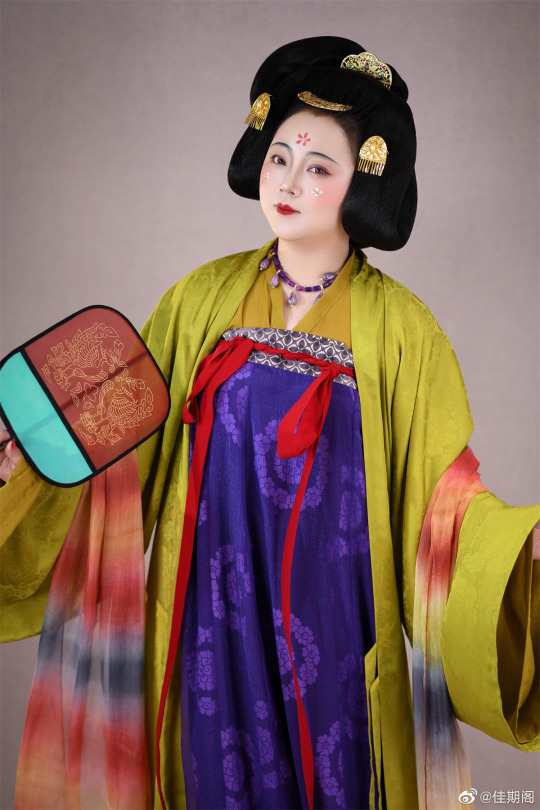
【Historical Reference Artifacts】:
Tang Dynasty Hanfu Relics Unearthed from the Underground Palace of Famen Temple
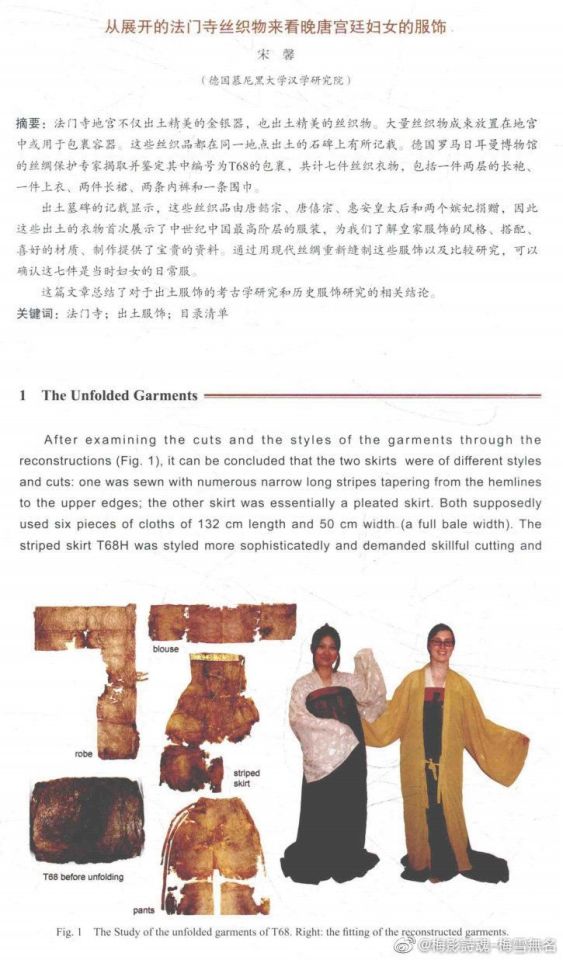
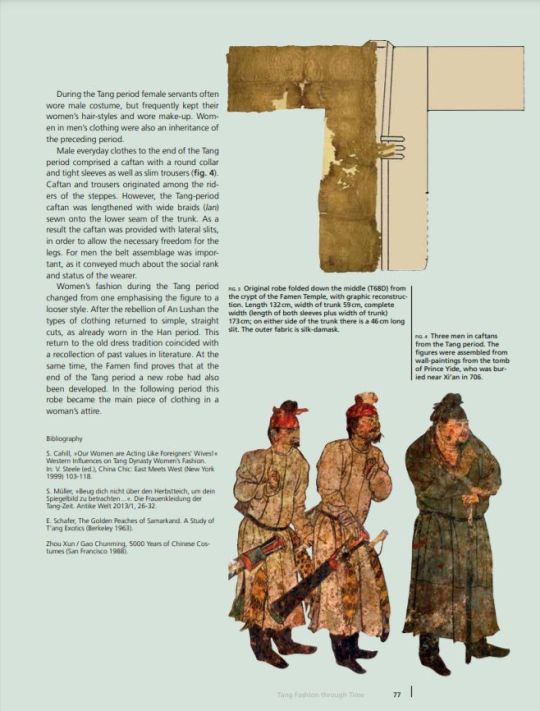
Tang Dynasty Hanfu Relics Unearthed from the Underground Palace of Famen Temple:直領對襟團窼紋長衫(袍)
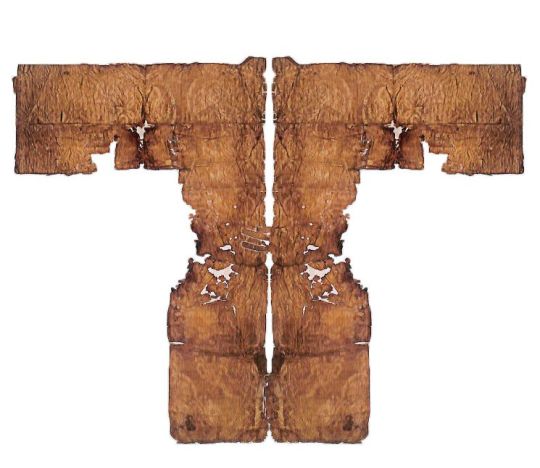
[Hanfu · 漢服]Chinese Tang Dynasty(618-907A.D)Traditional Clothing Hanfu Refer to the relics of Famen Temple
Late Tang Dynasty Period Noblewoman Attire
_______
👗Hanfu & Photo: @佳期閣
🔗Weibo:https://weibo.com/6614078088/N2FqMr2U6
🛍️ Tabao:https://item.taobao.com/item.htm?spm=a1z10.3-c.w4002-21517525888.12.3ed71c81WrejrM&id=722671302802
_______
#chinese hanfu#Tang Dynasty(618-907A.D)#hanfu history#hanfu accessories#hanfu#hanfu artifacts#chinese historical fashion#chinese historical makeup#chinese history#chinese style#chinese#chinese attire#chinese traditional clothing#chinese culture#直領對襟團窼紋長衫(袍)#Famen Temple#汉服#漢服#佳期閣#Late Tang Dynasty Period#chinese fashion#china
152 notes
·
View notes
Text
ordered an archaeological report on the late tang famen temple textile finds with high definition full colour photography and illustrations :3
#i have some pdfs on famen temple already but they only have info on the metalware and pottery & etc#and i really wanna have a good source for late tang extant garments#probably also gonna order the early tang murong zhi tomb report too but its like twice the price. weeps
1 note
·
View note
Text
the super smash bros brawl theme makes me go absolutely feral /pos
#RAHHHHHHH#I FUCKING LOVE SMASH BROS BRAWL EVEN THO I NEVER PLAYED IT#FUCK MAN ITS LOWKEY BETTER THAN ULTIMATE IMO#bitches will be like audi famen illius AUGUUGHHHH#dooodle daydreams
0 notes
Text
April 13, Xi'an, China, Shaanxi Archaeology Museum/陕西考古博物馆 (Part 5 - Tang dynasty, Song dynasty, and later):
Happy Mid-Autumn to everyone!
First up is again an undisputed star of the museum, the gold crown of Li Zhui/李倕. Li Zhui was the 5th generation descendant of Li Yuan/李渊, aka Emperor Gaozong of Tang, the first emperor of Tang dynasty (618 - 907 AD). It's speculated that this crown was what the Tang-era term "轻金冠" (lit. "light gold crown") was referring to. The crown itself wasn't just gold, however, it also had parts of silver, copper, and iron, decorated with pearls, mother of pearl, agate, turquoise, rubies, amber, ivory, and glass.
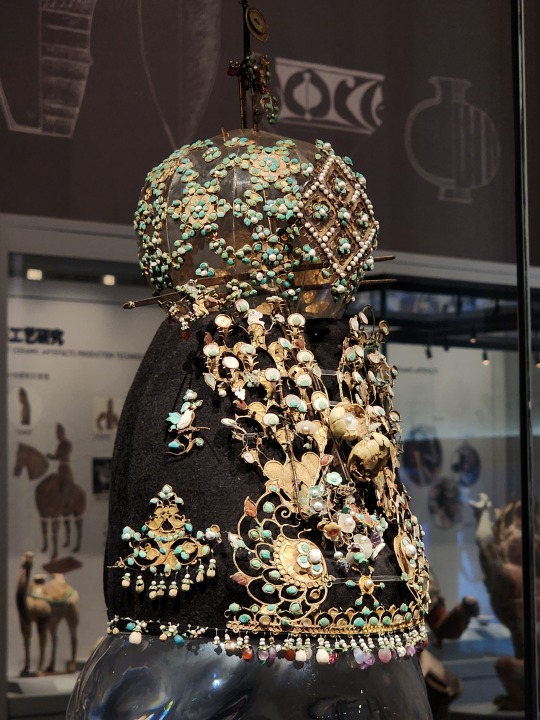
And it wasn't just a crown either. There were other pieces that were part of her outfit:
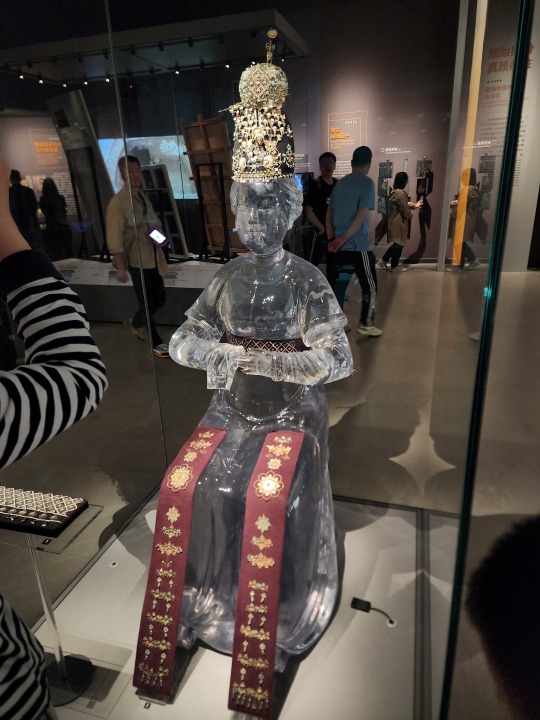
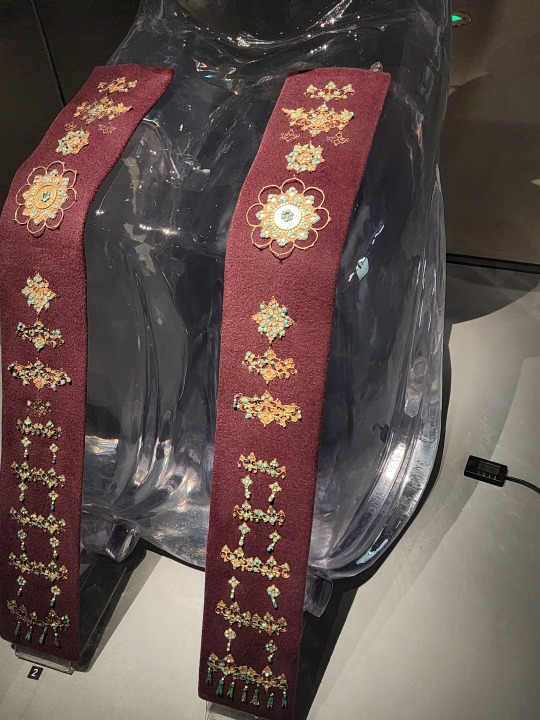

Various Tang-era gold and silver thread embroidery pieces found in the crypt of Famen Temple/法门寺, the plaque is visible in many of these so I won't be naming them all. There's a saying among Chinese archaeologists: "dry things last a thousand years, wet things last ten-thousand years, half-wet half-dry things last half a year" ("干千年,湿万年,不干不湿就半年"). This refers to the conditions the artifacts/remains were in over time, stable conditions usually preserve artifacts and remains better than changing conditions. Fabric-based artifacts are notoriously hard to preserve, especially in Xi'an's "half-wet half-dry" climate, so these are a rare sight:
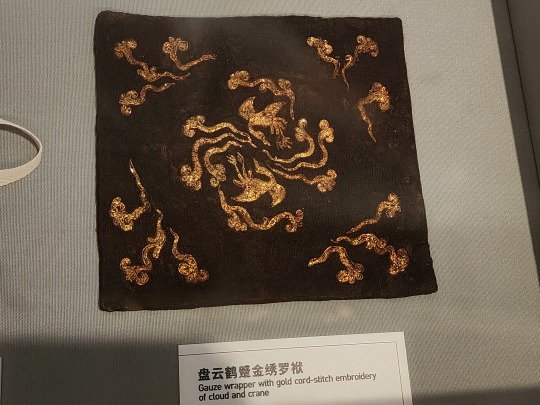
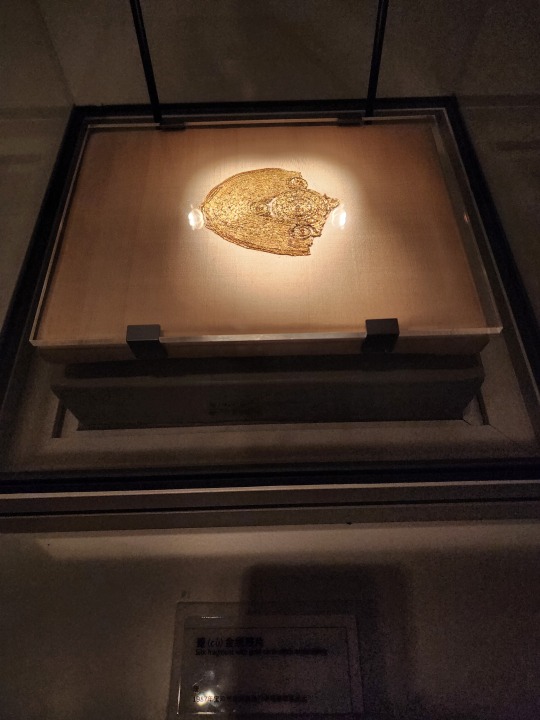
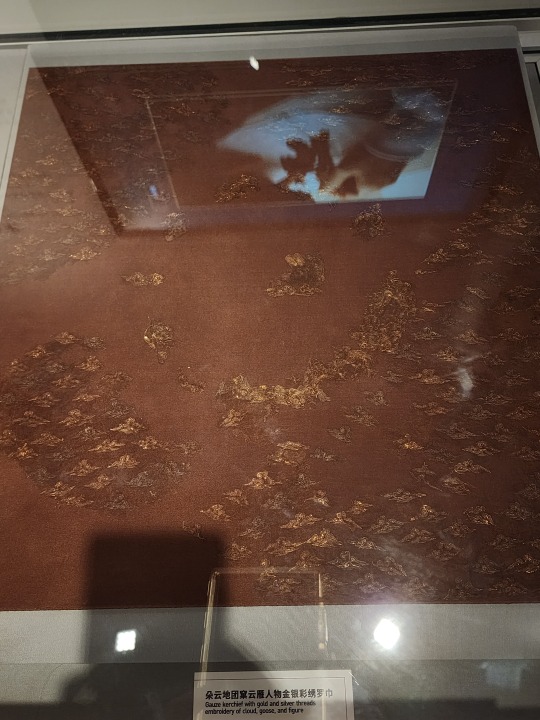
Note that the bird and flower design on the right is actually not an embroidery, but designs woven straight into the fabric:
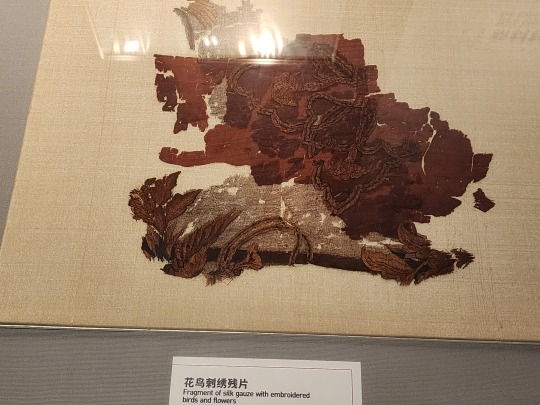
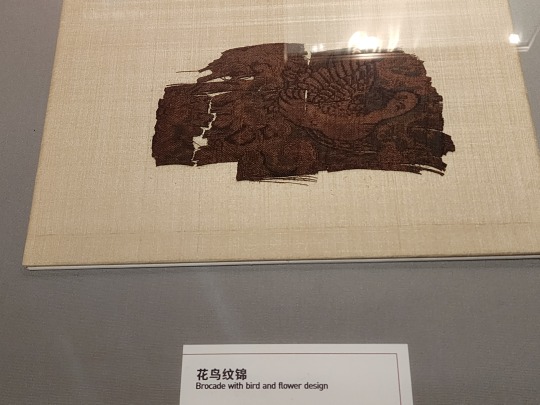
The gold threads used in these embroideries were made by wrapping long strips of gold foil around thread through the turning of these hook-shaped tools.
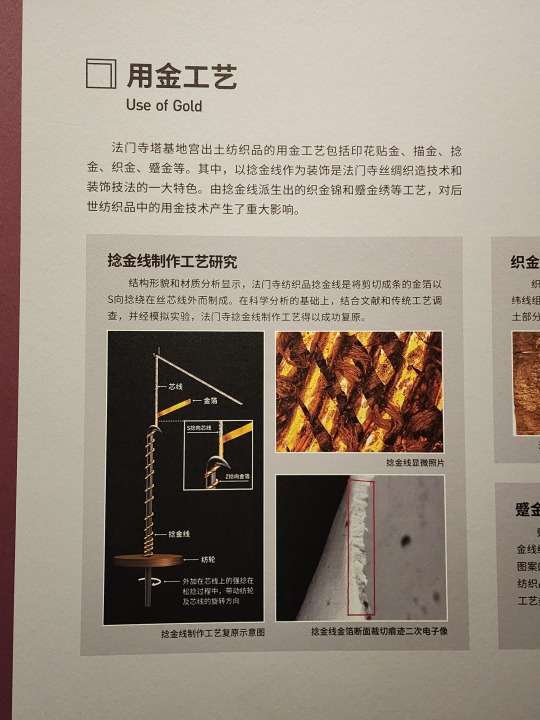
The gold threads produced from the above process were mainly used in two ways, either woven into the fabric (top), or embroidered onto fabric (bottom). The kind of embroidery here is called cujinxiu/蹙金绣, which uses gold threads and a technique that is similar to couching
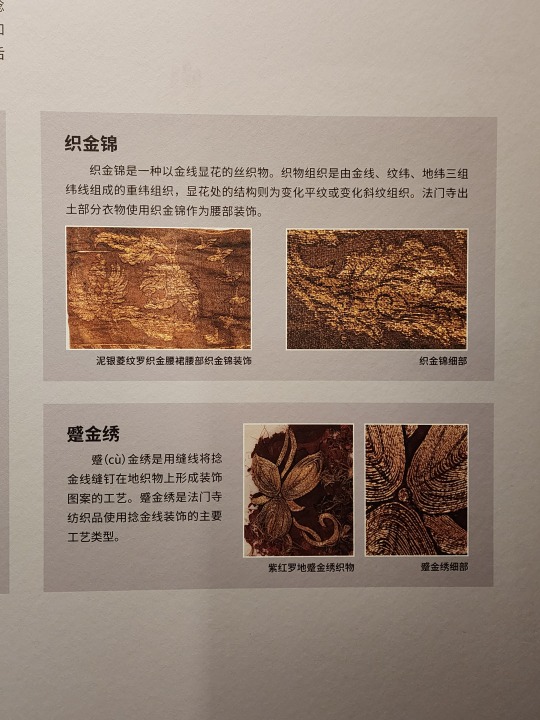
Models of the microscopic structure of different types of silk fabric found in Famen Temple. In common usage today, the term sha/纱 often refers to light, almost see-through polyester fabrics, but in the past this term refers exclusively to a type of light silk fabric. However, the other ones listed here (ling/绫, luo/罗, juan/绢, jin/锦) almost always refer to silk fabrics.
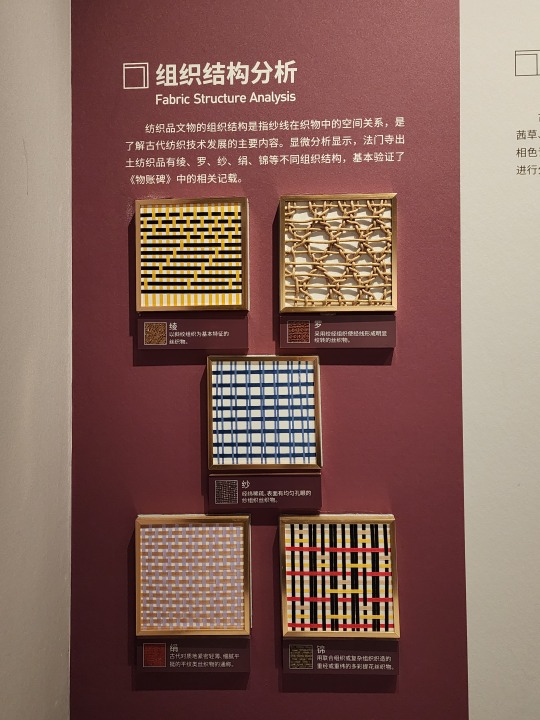
Different types of motifs/patterns found on artifacts throughout time. Left is the evolution of juancaowen/卷草纹 ("curled plant motif") from Tang dynasty to Jin dynasty (1115 - 1234). Right is the evolution of lianhuawen/莲花纹 ("lotus flower motif") from Northern Song dynasty (960 - 1127) to Yuan dynasty (1206 - 1368).
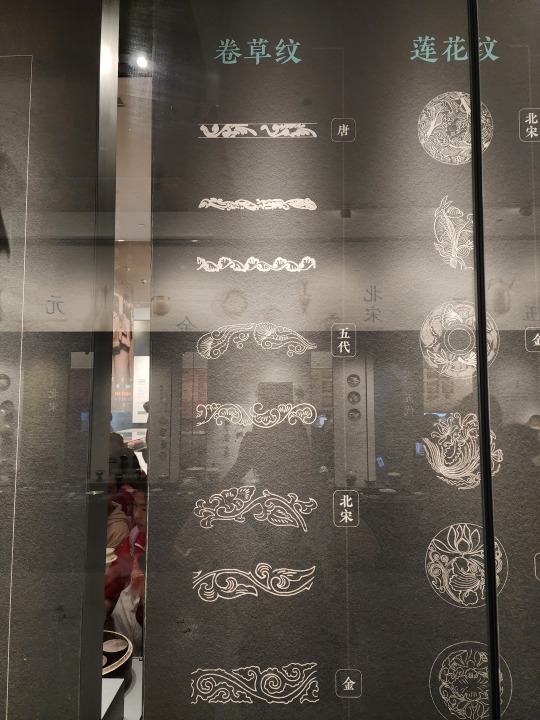
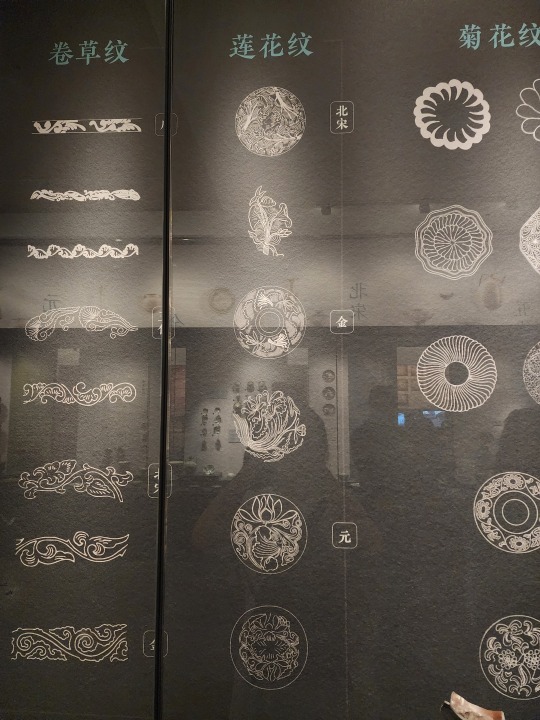
Left: evolution of juhuawen/菊花纹 ("chrysanthemum flower motif") from Tang dynasty to Yuan dynasty. Right: evolution of mudanwen/牡丹纹 ("moutan peony motif") from Tang dynasty to Yuan dynasty, and the evolution of youyuwen/游鱼纹 ("swimming fish motif") from Northern Song dynasty to Yuan dynasty.

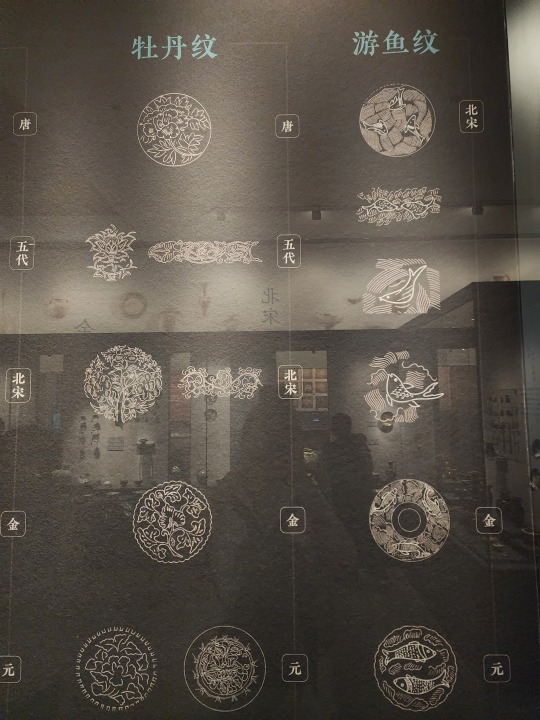
This is another one of my personal favorites, a Ming dynasty (1368 - 1644) bronze vessel with cloisonné enamel (called 掐丝珐琅 or jingtailan/景泰蓝 in Chinese). This type of vessel is called a gui/簋.
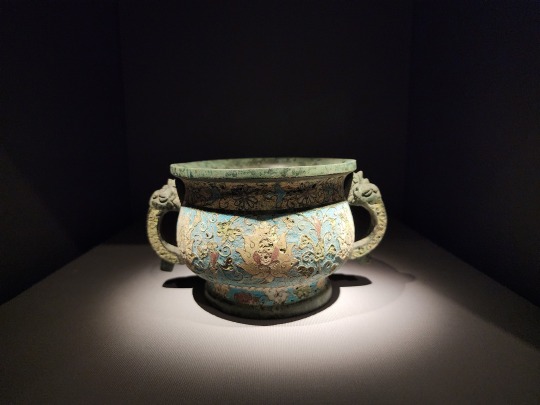
Song-era green-glazed porcelain from Yaozhou Kiln Site (耀州窑), so it's called yaoci/耀瓷 for short. This particular style is made by carving designs onto the piece before glazing and firing. I have attempted something similar when I took that wheelthrowing class years ago, but I failed lol
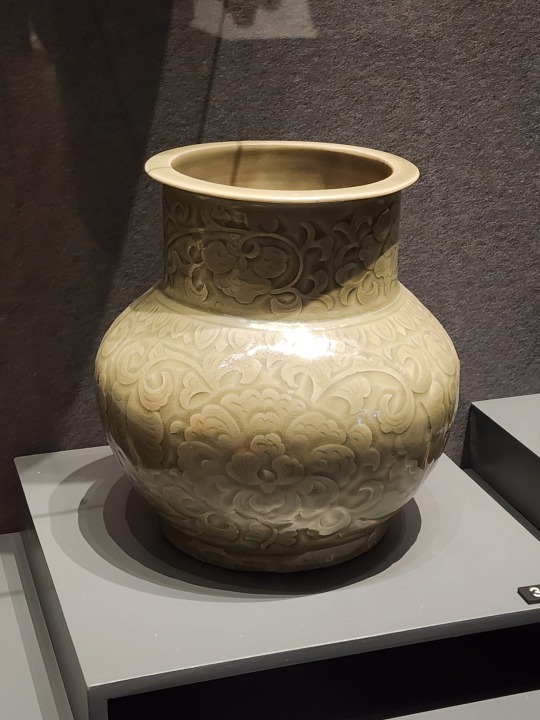
A Northern Song-era stone dui/敦 from the tomb of Lü Dalin/吕大临. The calligraphy here is in kaishu/楷书 script.

Also from the tomb of Lü Dalin, the left is a wine flagon with a dedicated holder used to warm the entire vessel along with the wine inside. The right is a incense burner with a swastika on top. Note that swastikas are very common in Chinese Buddhism, and is taken to mean "myriad" or "infinity" (the swastika is pronounced wan/萬, which literally means "ten-thousand", the figurative way of saying "infinity" in Chinese).
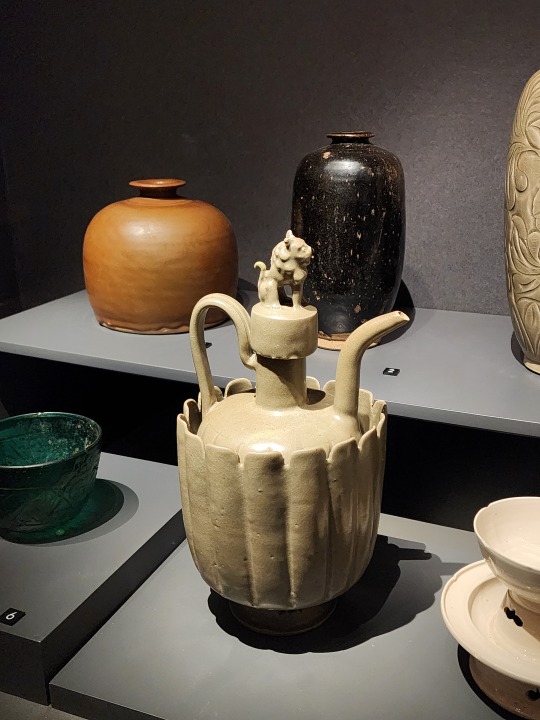
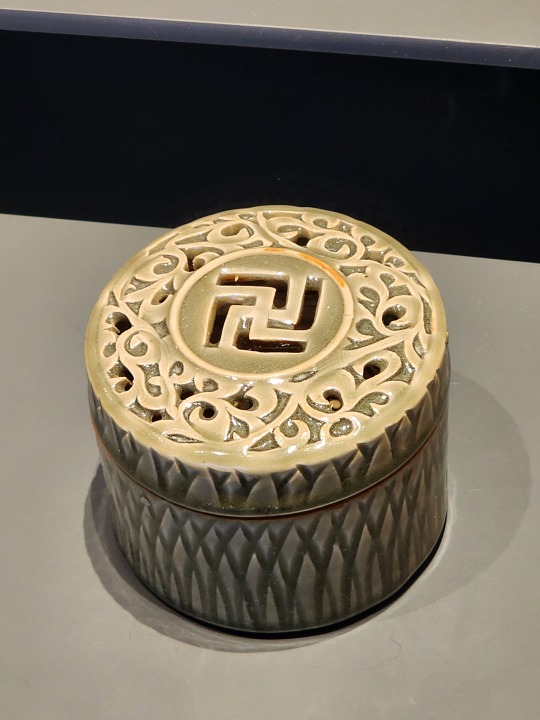
The process of making tea in Song dynasty, called diancha/点茶, which generally involves these steps: grinding the tea into a powder, sifting the tea powder, putting tea powder into a tea cup, pouring in hot water, and whisking the tea with a chaxian/茶筅 to create a light foam before drinking. In Song dynasty, the literati would hold contests among themselves to see who could make the perfect tea using the diancha method. This complex and time/effort consuming method was gradually phased out within China by the time of Ming dynasty, but deeply influenced Japanese tea making methods.
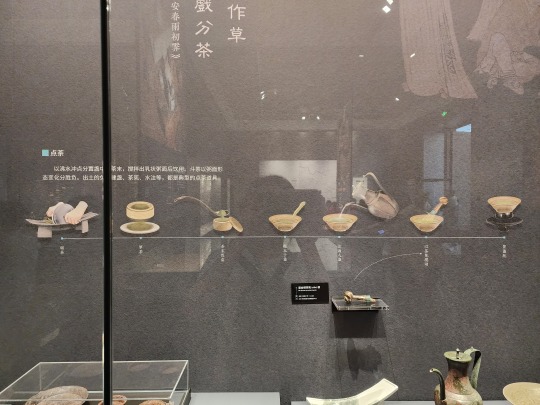
Left: a small porcelain piece depicting a mother lion and cub. The Chinese depiction of lions, called shi/狮, largely comes from a combination of the mythological suanni/狻猊, and the rare real lions that were given to China as gifts in the past. Right: a pottery dragon from Yuan dynasty, if I remembered correctly.

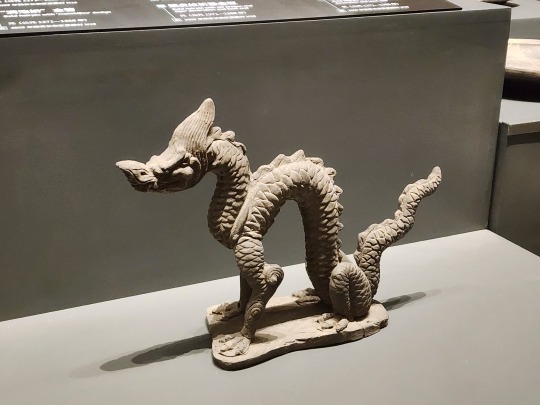
Also the previous part on Han dynasty (202 BC - 220 AD) artifacts was getting way too long, so I put these two pictures here at the end. In ancient China, many round coins had a square hole in the middle, and these holes were used to string the coins up for easier storage and counting. Such strings of coins are called minqian/缗钱, and this is why the quantifier for coins in ancient China is usually chuan/串, guan/贯, or diao/吊. In usage, chuan is not a strict quantifier, but 1 guan or diao = 1000 coins.
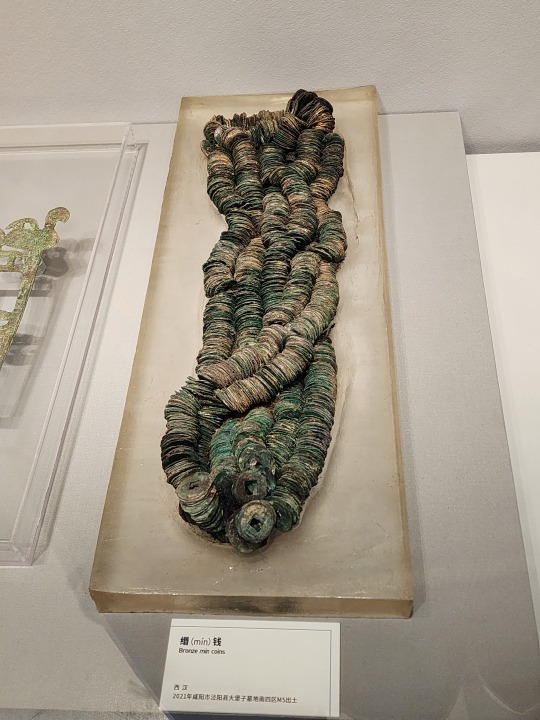
A modern recreation of a Han-era painted lacquer box, this red pattern on black background look is very characteristic of Han-era painted lacquerware:
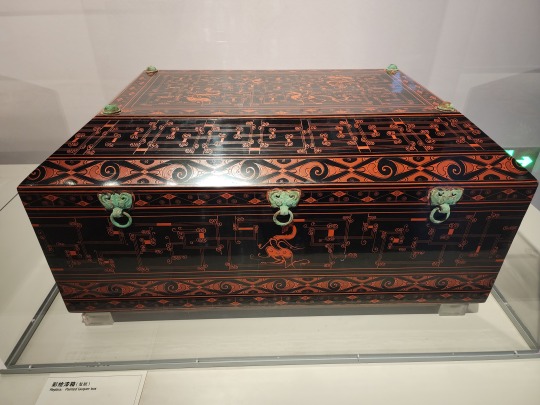
Painted pottery statue of a Buddhist deva:
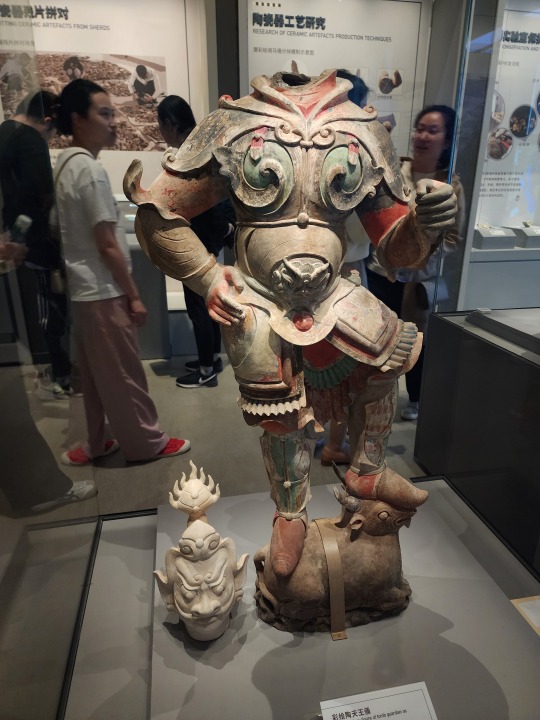
The painted wall murals of a Yuan dynasty tomb, viewed from below:
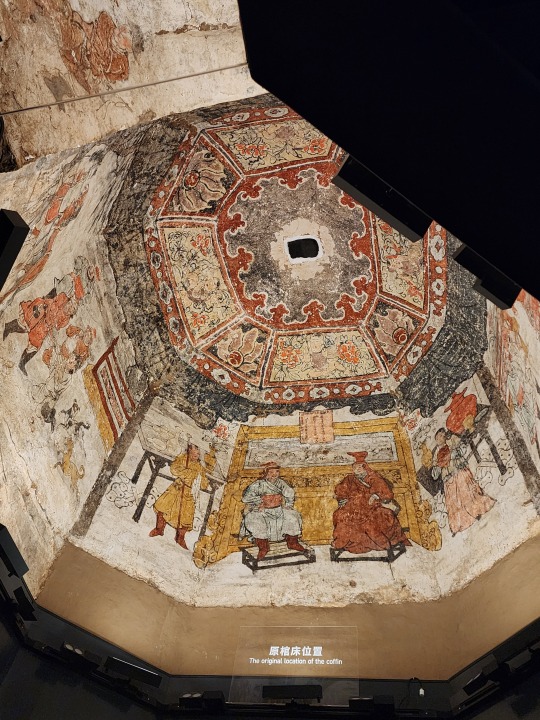
And this concludes the posts for Shaanxi Archaeology Museum! The next museum (also the last one) will be Shaanxi History Museum, specifically the new Qin-Han dynasties museum.
#2024 china#xi'an#china#shaanxi archaeology museum#chinese history#chinese culture#chinese hanfu#hanfu#chinese calligraphy#tang dynasty#song dynasty#jin dynasty#yuan dynasty#ming dynasty#embroidery#calligraphy#history#culture#archaeology
197 notes
·
View notes
Text
Weapons of the Monkie Crew



Khakkhara
The basic design of a khakkhara is of a central staff, normally in wood, topped by a finial in metal, with a looped design, from which smaller metal rings hang on each side (similar to the stringing of traditional Chinese cash). Various numbers of loops and rings are employed, with each number being assigned symbolic significance on the basis of a variety of Buddhist numerical formulas. Historical examples from the Famen Temple include staffs with one, two, or four loops and four, six, or twelve rings on each loop.
Several versions of the staff's origin are given in the Sarvastivadavinaya, but in all of them the staff is recommended to monks by the Buddha in order to ward off animals- either for protection from dangerous predatory animals like tigers and lions, or for scaring off small creatures like spiders and snakes that might be trod upon by wandering monks. The ringing of the staff can also alert donors within earshot of the monk's presence, as monks traditionally remain silent while collecting alms.
The number of loops and rings featured on the staff was also assigned symbolic significance, according to a variety of Buddhist numerical formulas- four loops symbolizing the Four Noble Truths, six rings representing the Six Perfections, or twelve rings representing the twelvefold chain of cause and effect
Tripitakas / Tangs staff has four rings and with the added LMK universe flare magic.


Yue Ya Chan (Crescent Moon Spade)
Also known as the monk spade, the yue ya chan (月牙铲) is a typical weapon associated with the Shaolin warriors. It features a crescent-moon-shaped blade mounted on a wooden shaft and a flat wedge-shaped blade on one end.
In ancient China, the Shaolin monks carried spades when traveling to bury corpses they might find on their journey as part of their religious obligation. Eventually, it turned into a self-defense weapon with the addition of the crescent blade, which allowed hooking and sweeping techniques.
youtube


Chinese Bronze Swords
Of course, Meis is made of Jade but the Bronze sword I think bests fits her TYPE of sword. Chinese Bronze swords first appeared during the notable Xia and Shang Dynasties in China. They were an advancement from the prior Chinese Dagger, boasting a considerably bigger blade. These weapons stood out because of their wide and robust blades. Initially, people used these swords in ceremonies and rituals. As time passed, these swords played a pivotal role on the battlefield, which significantly altered the course of China's history. Along wth this I put a video of some people showing of Chinese Swords including the one I mentioned.
youtube

Nine-Toothed rake/ Baoqin Gold Palladium
This weapon is hard to find much of in the real-world use besides as a gardening tool but in the JTTW the Nine-toothed rake is a polearm with nine teeth. Pigsy’s weapon more closely resembles agricultural tools that were traditionally used by farmers since the Yuan Dynasty. It is said to have been handcrafted by Laozi from divine ice steel and etched with arcane symbols. I may not have been able to find much in words but I did find two videos of some guys showing off how it can be used in a fight.
youtube


Staff
Both MK and Macaque currently use a staff. The Chinese staff is considered the grandfather of all weapons. The long staff is the most common, usually about 7ft long, and constructed from hardwoods like oak or white wax. It originated from the long spears used by classical warriors. The Shaolin monks removed the spearheads and trained with only the shafts suited for their peaceful monastic environment.
youtube
youtube
NOW heres the BIG Question with just about everyone in the Monkie Kid Crew welding a weapon what about...... WUKONG!!

Look his hand-to-hand is awesome and has crazy powers but seriously after his staff has been passed down and this new chaos coming it might be time for Wukong to wield another weapon.
While looking up the other's weapons I found others on theme with other old Chinese weapons.
San Jie Gun (Three-Sectional Staff)

The san jie gun (三節棍) consisted of three short staves connected by chains. It functioned as a self-defense weapon, suited for either short-range or long-range combat. Unlike a long staff, it can be easily concealed and carried. It also allows various methods of attack and defense. Versatile and hard to learn, it is among the weapons of choice for many advanced martial artists.
To stay in the staff family like the other monkeys but still change things up.
or
Chui (Hammer)

A type of mace, the chui (锤) was a round hammer, usually used in pairs. It had a heavy head on the end of the handle for delivering powerful strikes. This ancient Chinese weapon was most popular in the Shang and Zhou dynasties.
The chui was known as the copper hammer because it was often made from copper, though other materials were later used. Since they are typically heavy and require great strength to wield, these weapons are not popular among kung fu practitioners.
I picked this for its blunt and powerful hit. Similar to the Monkey King's own fists.
or
Tie Jian (Iron Rod)

The term jian (鐧), written in a different character from the sword (劍), is also used to describe a heavy bar mace with a smooth rod. They were typically made from iron and called tie jian (鐵鐧) or “iron rod,” but there were also tong jian (bronze rod). The name iron rod is a reference to its plain metal rod.
In the West, the tie jian is regarded as a type of Chinese sword breaker—a heavy weapon capable of breaking swords and other weapons. During the Ming dynasty, the military used large two-handed versions of tie jian. By the Qing dynasty, single-handed versions were more common.
This weapon has the blunt power similar to a staff and having the reputation of a sword destroyer it seemed to fit the powerful hit from the Monkey King.
or
Hu Die Dao (Butterfly Saber)

Widely referred to as butterfly swords, the hu die dao (蝴蝶刀) is a type of double saber. These weapons developed due to merging typical Chinese fighting knife blades with Western-inspired hilts. They featured distinctive D-shaped guards, though their blades came in various forms.
The narrow types were efficient for heavy cuts and were likely to be used by the Chinese military units and the local militia. On the other hand, the broader types were efficient for disabling opponents without killing them and remain popular today among martial artists.
I picked these ones because they would be the only dule weapon. Giving some variety.
Each one of these I found could fit Wukong in one way or another. But if you have any other ideas for the Monkey King leave them in the comments
:) Thank you for reading.
46 notes
·
View notes
Text
Feltlike making something nintendo related again I made mario Luigi and a surprise but for now I made peach
her personality is she's sweet soft spoken and very high patience she has a kawaii famenicity and isn't ashamed of being in love with anything cute
And her career she has a baking show and has been involved in many shows due to how expressive she can be on set it wouldn't be surprising that she was a theater kid gowing up


29 notes
·
View notes
Note
And don't forget that the UAE systemically enslaves black people and is financing a genocide at the hands of Arabs against black indigenous people. We matter too. The UAE is a state build on the backs of African enslaved people
Oh yes, UAE ans Saudi gov are god's wrath and evil on earth, the total abuse of workers and involvement in destabilisation of Sudan situation for their own ends, the involvement in the civil war in Yemen which led to one of the worst famen and they still putting a siege on yemen, their close tight to USA and isreal helped dismantle democracies during the arab spring and they helped the continuous civil war in Libya which right now in Libya one of the worst situations of human rights violation against sub-saharians bc fascist of west europe with the help of so saif countries using north african countries as borders, which them gov are not innocent of it all...
9 notes
·
View notes
Text


Was ist Performanz?
1.
Ich lache mich tot: das Weltgericht fragt mich nach den Gründen nicht. Was für ein Scheibenkleister!
Das Protokoll, das einen alles mit allem verbinden lässt, was für ein Scheibenkleister. Heinrich von Kleist schreibt doch grimmig vom Weltgericht und einem Tod, der geschlagen werden soll (nicht geschossen). Totschlagen soll man nach Kleist diejenigen, die nicht deutlich, sondern frank sprechen. Und dann kommt Tarantino und macht Witze darüber, natürlich in einer Kellerbar und mit Deutschen, famen und infamen Figuren an einem Tisch. Na toll, Treppenwitze der Geschichtenwelt.
Drei unerbittliche Gläser richten die Situation, wegen einer Geste, die falsch sein soll, weil sie fremdzählt und einem kontrafaktischen deutschen Offizier seine Täuschung heimzahlt. Die ganze Menschheit, notiert Aby Warburg in seinen Notizen, sei schizoid.
2.
Die Schize fällt dem Warburg auf, weil er ein melancholisches Talent hat, also alles mit allem verbinden kann, alles von allem unterscheiden kann, alles mit allem austauschen kann, nur nicht immer mit dem selben Schub und der selben Hemmung. Bei ihm sind die Tropen auch mal traurig, auch mal fröhlich, er selber auch mal der wütende Pedant, der donnernde Direktor und drängende Familienvater, der unnachgiebig nervende Bruder seiner Brüder und Schwestern, die ab und zu ihn bitten müssen, er solle doch jetzt mal nicht auf den Kösterberg kommen, sondern lieber mal in der Heilwigstraße bleiben, es sei gerade alles etwas zu viel. Dann wieder wird er von Lob überschüttet, weil er so ein witziger und herzlicher Gastgeber ist. Dem Warburg fällt auf, dass die ganze Welt schizoid ist - und ein Teil der Welt bedankt sich dafür, dass er die Diagnose erhält, er sei schizoid. Er kommt ins Asyl, die Welt soll draußen bleiben.
3.
Wie, hat der Tarantino Martin Schongauer studiert und Heinrich von Kleist? Hat er die Gesten der Weltenrichter studiert, hat er Derrida gelesen? Kann sein, muss aber nicht sein. Alles mit Norm und Form belegt, wenn es passiert ist.
Die Bilder und die Begriffe kursieren auch ohne Autorisierung - und dadurch verschwinden nicht einmal die Subjekte, nicht die Objekte. Dadurch sind sie frequentierbar, messbar, missbar, musterbar, schichtbar, scheidbar. Science at the bar, die Zugänge und Ausgänge trainiert, so stelle ich mir die Kulturtechnikforschung vor. Es ist strittig, wie sie sich entwickelt haben soll. Angeblich, so lauten Thesen, habe Vismann und der Kittlerkreis das Subjekt fallen lassen, so lese ich sie nicht, ich lese sie aber so, dass sie fruchtbar werden. Ich lese mich ein. Man kann jede Stelle dooflesen und schlaulesen. Glaubt man wirklich, der Robert Alexy wissen nichts von der wilden Welt, wenn er seine abstrakten Formeln schreibt? Glaubt man wirklich, der Habermas wissen nur mit halbem Maß, wie limitiert die Rationalität sei? Sie schreiben alles in Details, die kontrahieren und distrahieren. Darum ist Kant Systemtheoretiker und Dekonstruktrivist, darum kann der Diskurs, der sich bei Gunther Teuber auf polare Weise entspannt, systematisch und dekonstruktiv weitergeführt werden, die Transzendenzformeln sind schon Pathosformeln, wie die Kontigenz- und Konsistenzformeln vor ihnen und nach ihnen welche sind. Die Form passiert und aktiviert, die Norm passiert und aktiviert, beide sitzen einen achronologisch geschichten Material auf, einem sedimentären und aufrührbaren Geschichte.
So ist Tarantinos Szene ein kleines, brachiales, brachyologisches Courtroomdrama und der Versuch, freie (bare) Assoziation/ bar association gelingen, glücken zu lassen, wenigstens langen und lingen, schwungvoll kippen zu lassen. Jedes Details der Szene ist wohlinformiert, weil es rauscht. Dass hier der Weltenrichter aufgrund minderwertiger Mimesis (Nachahmung mit kurzer Haltbarkeit ) zum Affen wird (der deutlich Deutsche durchschaut ihn und sagt, es sei ihm genug mit dem Affentheater), dass der durchauende Deuter und bald durchlöchert verschlungene Laokoon dann die Walther zieht und mit der Walther auf die Testikeln zieht, das zieht die rhetorica ad herennium (in der die Hoden eines sündigen Bockes das Beispiel eines starken und forensischen Bildes bilden) aus dem Gedächtnis, den Walter Benjamin und sein finalen Witz (nur eine Pointe, nur eine Pointe!) im Umgang mit Gesetz und Gewalt auch.
Die Walther ist gerichtet, der Witz gerettet. Die Humorlosen können auch so die Faust ballen, es ist eh alles too much, too soon und dazu noch zu spät, die Katastrophe ist gelaufen und im übrigen im Gange. Die Szene aus Inglorious Bastards kann genial erscheinen, jedes Detail scheint dann zu passen, weil es passiert - und weil es einem achronologisch geschichteten Material aufsitzt, dem man triebhaft verflochten sein kann. Die Szene ist bastardisch, in Tardes Sinne kreist die Mimesis hier exzessiv auf und ab, in hohen Tiefsinn und mindere platte Kalauer. Man kann inspiriert sein, muss es aber nicht. Das schließt nicht aus, dass man die Szene langweilig, doof, platt, banal, zynisch und total daneben finden kann. Man kann sie als dichte Szene und als pathologische Spielerei mit Geschichte sehen. Diese Szene ist ambigue, weil sie am Biegen ist und damit wie ein Weltenrichter auf einem Bogen sitzt, oder aber wie ein Witzbold unter einem Tonnengewölbe, wie der Dionysus. Das Tragische der Szene kann thrakisch belacht werden. Diese Szene kann als Beitrag zu einer juridischen Ikonographie gelesen werden. Man könnte ein ganzes Semester nur an dieser Szene aufhängen, um eine Anfängerübung zu Geschichte und Theorie des Rechts daran zu entfalten oder ein Forschungskolloqium zur Bild- und Rechtswissenschaft. Cogito aktualisiert flugs sich, das Subjekt, das Objekt und dazu noch sein Händeln und Handeln, sein Trachten und Tragen.
Glaubt man wirklich zweifelsfrei daran, dass man sich darin erschöpfen würde, immer wieder über uneinige Probleme mit reflexivem Recht oder über Derrida, Luhmann, Steinhauer, über Regeln und Fiktionen, Kontrafakturen und kontrafaktische Stabilisierung und Warburg zu schreiben? Glaubt man wirklich zweifelsfrei daran, man würde nihilistisch und mihilistisch etwas zu Kulturtechniken schreiben und dabei nicht an die Verbindlichkeiten und Limits des Rechts glauben? Man glaubt an den ganzen Scheibenkleister inklusive seines unerbittlichen Glases, seiner Durchschaubarkeit, die das Begehren und den Verkehr nicht stillen. Sie stillen ja nicht einmal das Gesättigte, Saturierte und Satyrische.
4.
Eduard Buzila hat im Kontext seiner an Hannah Arendt entwickelten Geschichte und Theorie des Flüchtigen/Flüchtlings passend darauf hingewiesen, dass Kompetenz Performanz und Performanz eine Rolle und ein Rollen, ein laufender Manteltausch sein kann, der über die Bühne geht. Der hat Recht und Kulturtechnik studiert. Die kontrafaktische Stabilisierung ist eine perfor(m)ierte Kleidung, auf porös löchernde Weise sittlich und kleidsam. Die Iurisprudenz darin ist ein Scherz und Ernst. Meine Forderung an Studentinnen und Studenten: Jede(r) soll einen Zettelkasten von der Größe von Blumenbergs oder von Luhmanns Zettelkasten haben, aber nicht jeder soll ihn wie Luhmann oder Blumenberg verwenden.

2 notes
·
View notes
Text
youtube
Da Ke Ding, September 23, 2016
Da Ke Ding, c. 1046 - 771 B.C.E. (late Western Zhou dynasty, China), bronze, 93.1 cm high (Shanghai Museum) Speakers: Dr. Kristen Chiem and Dr. Beth Harris. Created by Beth Harris and Steven Zucker. Smarthistory
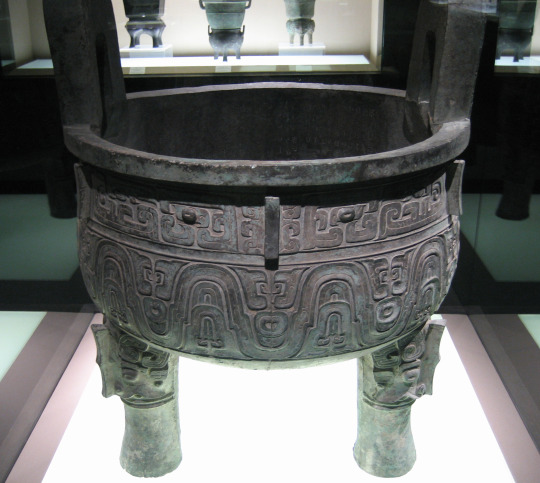
Da Ke ding (大克鼎), Western Zhou (1046–771 BC), China Bronze Height 93.1 centimetre (36.7 in); width 75.6 centimetre (29.8 in) (bore), 74.9-centimetre (29.5 in) (inside diameter); weight 201.5 kilogram (444 lb) Discovered in Famen Town, Fufeng County, Shaanxi in 1890. Collection of the Shanghai Museum
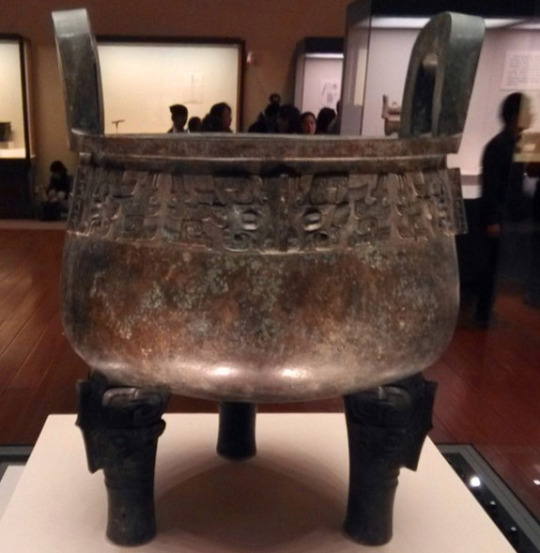
Da Yu ding (大盂鼎), early 10th century BC Western Zhou (1046–771 BC), China Bronze Height 101.9 cm (40.1 in), width 77.8 cm (30.6 in), weight 153.5 kg (338 lb) Discovered in Li Village, Jingdang Township, Qishan County, Shaanxi in 1849. Collection of the National Museum of China


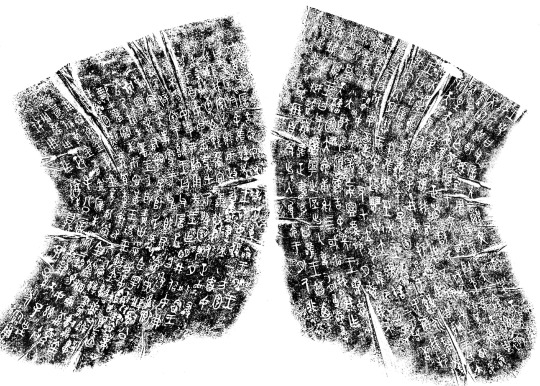
Mao Gong ding (毛公鼎), 857-828 BC Late Western Zhou (1046–771 BC), China Bronze Height: 53.8 cm, depth of belly: 27.2 cm, diameter: 47 cm, weight: 34.7 kg Discovered in Qishan County, Shaanxi in 1843. This "ting" cauldron has a wide, flared mouth, a linked ring motif decorating the rim, upright handles, and three hoofed feet. The inscription, which can be divided into seven sections, describes how when King Xuan of Zhou came to the throne, he was anxious to see the country thrive, and charged his uncle, the Duke of Mao, with governing the domestic and external affairs of state, big and small, and to do so conscientiously and selflessly. The inscription goes on to state that the King then presented the Duke with official vestments and gifts, and that this vessel was cast in order to record the honor given to the Duke for his descendants. Collection of the National Palace Museum, Taipei
#Western Zhou dynasty#Zhou dynasty#Chinese#art#art history#1st millennium bce#9th century bce#10th century bce#metal#bronze#language#taotie#pattern#design#archaeology#national palace museum#national museum of china#shanghai museum
3 notes
·
View notes
Text
roman emperor forenames, places and deities + imperial names from tes BUT excluding "c"
Abato Abubondius Adenaevia Adina Adius Aeberus Aetinus Afiduinus Aftrenesa Agnus Ahea Aius Alentus Alia Alius Amari Amaximbus Ambrenus Ania Anianus Annus Antellagna Anurielona Anza Anzinemona Apus Ardenna Aria Arloria Arosin Artius Asillav Astelaeto Atus Audiannus Augadia Augius Augus Auila Aulia Aureius Auriertus Auriosta Aurivinus Aurixtus Avodio Azshia Baia Baienumna Barius Bellis Bena Benagel Benus Bertorim Blar Blatus Bonav Bredia Bria Brio Brium Brournames Bruli Burante Darvis Deragna Destina Didus Dollin Doneltius Donius Dord Doutitus Dran Draxianus Duremetus Duroblarne Dursonius Dustuna Edia Edian Egia Eglen Egolona Ellagna Ellus Enius Entia Equian Eria Esniunus Esta Eturrolo Everro Fabon Fabono Faleges Falix Fallatius Falmas Famene Famitius Famytia Farina Faunna Fauros Faus Femus Fendridus Fesanus Fitius Flaratinia Flayn Floneen Flonia Floran Fonatina Fongius Fonius Forbarivil Frenmul Freximus Gabia Gadrullius Galina Ganas Gatavidus Gemia Geminorda Genatian Gendunus Germius Gius Glienus Glovennina Gori Gornipius Grarius Gratellav Grelintus Gria Gries Grius Grunianus Haratius Harmis Helus Hendomma Henetus Hern Hertus Hervilus Hius Horquipla Hosta Hyporian Imbria Inia Inis Inus Istinia Itus Ivitory Jana Jarius Jarsiandra Javonius Jeriusia Jerrian Jesivius Jiratia Jirle Jirortus Jivius Johos Jorantius Jovius Julaieria Juniantius Justus Juvinus Juvio Kylvarris Lades Lael Laesabolus Laius Lanus Lari Larius Lathillia Lavan Lavia Lavina Ledalx Leia Lendryx Leonagaren Leonia Leonyan Lesh Lethorgene Lexa Libiustia Lifus Lina Lium Lius Logatus Lonius Lonsin Lonus Lora Lord Lordaeium Loriantas Lotes Lotres Lubo Lugus Maeptinus Majovinus Mala Maletoria Mandus Manius Mannius Mannum Manus Maregna Marena Marman Marnassius Maron Maronus Masters Mato Matoria Matta Mauria Maus Maxius Melina Melvian Menia Messus Metus Milinus Mitattorus Mius Morier Muruto Mutav Naetius Nanix Nato Nerebri Nesae Nria Nronaloria Odorius Ohof Ohors Olia Ophus Opius Opsirgus Orastorius Oratin Oria Ortinia Ortius Oruna Osenius Oturna Pannianus Pantius Pappus Pariera Parius Parvilio Passium Pata Patilenne Patis Patrae Pavina Peda Pedgus Peleius Pelvia Penia Peraever Perus Petia Petus Phraesto Phratan Pideriel Piolen Pittina Piusillus Plan Plide Plius Poea Polarinus Poneutinia Ponia Pono Popis Porbon Porekellus Porianum Porsius Pral Prame Prin Pule Pulia Quiandina Quitus Rattius Relippius Rellus Remania Rennea Rentinus Rentoria Resdrastim Ribooks Riera Riorajooks Risel Rotelepius Rowinus Rummagone Rupizzi Sadratius Saeshe Sagan Saglias Salbenia Saleius Salesatius Salinus Sandus Sania Saudun Segius Seianis Seius Sentius Septinine Seria Sertilbas Sevemius Severgitto Sevus Sexa Sibia Sidaregon Sila Silbigus Silfrelen Siregilia Siria Sirol Sius Sonisa Sosimo Stina Stius Syllius Syndania Taha Teia Telia Tenderto Teregia Terelius Tertian Tharastus Thel Theophio Thexus Thor Tinferaeme Tinitis Tius Trax Triaenus Troxio Trus Tyraxio Uran Uries Urisis Vagentia Valenia Valgors Valia Vallus Valmontius Vanus Varder Varion Vatinus Vatius Velibus Velvius Vena Vend Venistina Venius Venta Venthilo Venti Ventinia Ventius Ventus Vereia Vetio Vetius Vianus Vidis Vilaulia Viota Vittertia Vittia Viullorum Vium Vius Vlalus Vlamulius Vodesa Volius Vollia Vonianus Winus Wotius Zengona Zentius
2 notes
·
View notes
Text
The more I think about and familiarise myself with it, the more I come to think that Japanese Heian culture did not emerge solely through an internal isolationist process. Looking at late tang/five dynasties/early song iconography in Dunhuang, the Famen Temple garments and comparing to 11th-12th century Heian scrolls like Prince Shotoku, the Genji Monogatari Emaki, the Northern Fujiwara clan Chuson-Ji temple donations, and other miscellanea and there are so so many commonalities and emerging trends- increasing use of goldwork in textiles, bigger, often giant floral/geometric medallion motifs, wider proportions, low hanging sleeves, stiffened rather than soft headpieces, more prominent cross-collar garments with wide collars, e.t.c. In addition to the well documented monastic exchanges which took place, bringing updated tea culture and mainland chinese buddhist texts and schools of thought. Which is interesting because so much of what you hear is just the opposite- that the Heian period was when Japanese culture finally "properly" developed its own aesthetic sense and practice. But there has always been continual economic and cultural exchange in east asia! You can't really understand any state or region without acknowledging that, but people keep trying to do so with Japan, for what I think are underlying very problematic reasons
5 notes
·
View notes
Note
Coucou ! :D Pour les questions des mariages, si ça ne te gêne pas, la question 9 ou 18 ou 21 au choix (ne te force pas à faire les 3, surtout pour la 9 qui doit prendre pas mal de temps ^^') pour n'importe quel couple que tu aimes bien ! :D Merci beaucoup d'avance !
Salut et merci beaucoup :) Du coup j'ai fait les 3 parce que pourquoi pas (et avec des digressions un peu partout) ! J'ai laissé les dieux décider de chacun des couples !
9) Show us a mood/stimboard of their wedding's general aesthetic...
Pour Gladys et Dimitri (le mariage royal, hohoho !) TADAM !

(Bon j'ai tordu un peu la consigne donc c'est autant un moodboard sur leur relation que sur l'esthétique de leur mariage. On ne le dit jamais assez, l'image du milieu a été dessinée par la talentueuse Yzderia.)
18) Did anyone oppose the marriage? Did they speak then, or did they just forever hold their peace?
...Pour Felix et Vigdis.
Comme a dit une personne très sage : "haters gonna hate". Il y a forcément des gens qui ont trouvé de quoi critiquer ce mariage, que ce soit à cause des origines de Vigdis ou pour n'importe qu'elle autre raison triviale.
Mais comme ça reste le mariage du duc et que Vigdis est une héroïne de guerre qui a des connexions importantes, personne n'aurait osé l'ouvrir pendant la cérémonie.
De toute manière, Philippe a bien vérifié la liste des invités avant histoire d'enlever ceux qui pourraient poser problèmes vu qu'il veut que son neveux passe le meilleur moment possible.
Par contre c'est évident que Sylvain est allé voir Felix avant la cérémonie pour l'asticoter et lui ressortir un truc edgy sur la romance et le mariage que Felix a dû dire à l'Académie. (Loog approuve tout à fait ceci mais attention au karma, Sylvain. Felix ne va pas te manquer).
(Après reste la question triviale de savoir si Vigdis a finalement mis une robe pour son mariage. Mais vu qu'elle dit à Gladys dans un des chapitres qu'elle "mettra une robe au moment où Gladys s'y attendra le moins", sans doute pas).
Au final, ça reste donc une cérémonie qui se déroule très bien !
21) Do they have a honeymoon? Where to? How soon after?
...Pour Loog et Maude !
Vu que le mariage se passe juste un peu avant le début de la guerre, pas vraiment, non. Et d'ailleurs, Loog culpabilise de n'avoir que ça à lui offrir, même s'il est profondément heureux et ému qu'elle reste avec lui malgré ce qui se profile. C'est pour ça qu'il se promet de se rattraper dès qu'il le pourra et de traiter sa dame comme elle le mérite.
La cérémonie est aussi festive que possible. Ils veillent bien à ce qu'il n'y ait aucune décoration blanche, vu que c'est la couleur du deuil en Dagda, pour ne pas rappeler de mauvais souvenirs à Maude. Du coup ils sont soit tous les deux habillés en bleu, soit elle en vert et lui en bleu. Maude a une fleur dessinée sur le front, ce qui est un maquillage traditionnel de chez elle. C'est quelque chose qu'elle fait toujours tant que c'est possible.
Un peu comme ici :
D'ailleurs, si tu veux voir des tenues de la période dont je m'inspire pour les vêtements dagdaniens, je te conseille vraiment ce tumblr. Il y a de très beau vêtements et de très jolies reconstitutions :
Mais cela dit, cela ne les gêne pas non plus parce que Loog et Maude sont heureux juste en étant ensemble. Un chroniqueur de l'église qui les a rencontrés lors des fameuses négociations note qu'ils s'apportaient beaucoup de joie l'un à l'autre.
Du coup la "lune de miel" c'est plutôt après, lorsqu'ils peuvent prendre plus de temps pour eux. Lorsque leurs responsabilités les amènent à se déplacer, ils en profitent pour visiter Faerghus. Ils finissent par avoir de nouveau le temps d'apprécier la paix.
1 note
·
View note
Text
Private Equity as a business model is at best a mistake and at worst the biggest blight since the one that caused the Irish potato famen.
what does seem to be happening across the board on every website is that theyre going to be scrapped for parts to shareholders. ad rev is straight up failing. there are no back up monetization plans because they all expanded beyond their scope and took money they couldnt return on
953 notes
·
View notes
Text
An article takes you to know the story of Gaiwan
Let's invite Lin Daiyu, the protagonist of "A Dream of Red Mansions", to demonstrate the classical usage of Gaiwan. The 1987 edition of the Red Chamber was very finely shot. There was another scene before Yingchun drinking tea and using the lid to skim the floating tea, and this scene is Daiyu entering the Rongguo Mansion as a guest. This action was omitted and just used to put the lid against the rim of the bowl and drink tea. This is another etiquette of using a Gaiwan, and you can't skim the tea when you are away - it means that the host's tea is not good.
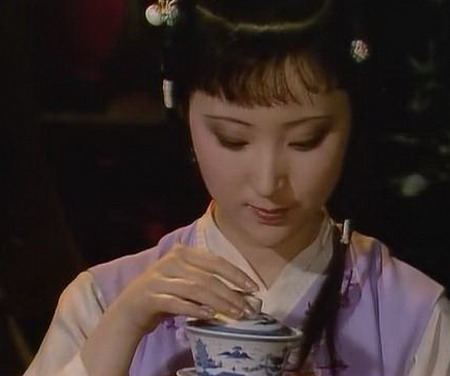
The advantage of Gaiwan is that it is not hot. The origin of this goes back to the Tang Dynasty. The eldest lady of Cui Ning's family think that the tea bowl was hot, so she glued the bowl to the saucer. This is the predecessor of Gaiwan, called Tuozhan or Tuozi. Cui Ning served as Jiedushi around 770, which should be the approximate time when Tuozhan appeared. Among the treasures buried in the underground palace of Famen Temple in 875, there is a glass holder, which is the earliest real object that can be verified by time.
Check out our collection of Vintage Teacup, we offer beautifully vintage china for your home.

The Yue Kiln and Xing Kiln in the Tang Dynasty, and the Jun Kiln and Ding Kiln in the Song Dynasty all have Tuozhan. Most of these Tuozhan are connected with tea cups and trays. People in the Song Dynasty liked to compare tea art, and used black-glazed bamboo hat-shaped cups to hold tea. At that time, the development of Tuozhan was stagnant, and the Gaiwan that was really suitable for making tea appeared is in the Ming Dynasty.
The Gaiwan at this time were deeper than those in the Tang and Song dynasties, which were suitable for storing tea leaves, but they had a lid but no bottom support.
Probably in the late Ming or early Qing Dynasty, the Gaiwan was added to the tray and became a Gaiwan in the modern sense. The tray is used to prevent scalding, so it may not be so if you think about it. For example, if you pick up a cup of tea that is hot, it will definitely burn your mouth when you drink it. Why do you have to hold it? Will definitely let it cool for a while before drinking. Therefore, the core value of the tray is more of a sense of ritual.

The Gaiwan was born in noble family, and it was also a tool of the upper class in the Ming and Qing Dynasties. Among the many tea utensils, the Gaiwan is the most difficult to use. You need to use two hands, and the movements are slow and calm. It looks elegant and luxurious, but in fact it is afraid that the bowl will fall from the support. The upper class likes to play these things that have technical thresholds, and ordinary people can't easily learn them. By the middle of the Qing Dynasty, Gaiwan had become the standard equipment of officials and eunuchs, and wealthy families followed.
Check out our collection of Vintage Teacup, we offer beautifully vintage china for your home.
Until the Republic of China, the Congress of Beijing gave birth to a new tea set. Hundreds of councilors sat together for a meeting, each with a Gaiwan in front of them. At this time, the weak point of the Gaiwan was exposed. The capacity was too small. Hundreds of people wanted to add water and change the leaves. Dozens of waiters rushed to the scene. The scene was chaotic, so the Congress passed a motion to make the tea bowl bigger.
This task was handed over to Jingdezhen. At that time, there was a Jiangxi Porcelain Company that found inspiration in an old warehouse. It was such a thing:

Isn't this a mug? Yes, Jingdezhen has been making mugs since the Ming Dynasty, but they are all shipped directly for export. Mugs were invented by the Egyptians in the Pyramid Age, mainly for drinking hot drinks, such as beer - yes, beer was hot at that time. Later, it spread to Europe, and the materials were wood, metal, etc., and the Ming Dynasty began to order porcelain from China.
Jiangxi Porcelain Company added a cover to the mug to keep it warm, named it the Prime Minister, and called it the Zhongshan Cup. Because the body of the cup is straight, also known as the Zhongshan tube, this is the first time the Chinese use a teacup with a handle.

In 1958, the State Council ordered teacups for office use. Liling Porcelain Factory improved the Zhongshan cup, and the bottom foot was made into an inward curve, which was called Jiefang Cup. Later, many styles of office cups were developed, all of which were based on Zhongshan cups and Jiefang cups. After the office cup became the mainstream, the Gaiwan transformed itself and began to function as a teapot. Now it is impossible to verify when this usage started, it is estimated that it was in Guangdong in the late Qing Dynasty. Compared with the teapot, the advantage of the Gaiwan is that it is easy to clean, especially the large-leaf tea dregs such as oolong, which are very troublesome to clean out from the pot. Another point is to cover the bowl to dissipate heat, so as not to suffocate the leaves.
Today's Gaiwan are basically used for tea, which is equally as good as the purple clay pot. Moreover, from one Gaiwan for each person to one shared by many people, the weak connection becomes a strong connection, and the joy of being alone is not as good as that of others. The ultimate vintage teacup subscription: https://kimkiln.com/
0 notes
Photo

Famen Temple 🙏🏻(在 法门寺) https://www.instagram.com/p/CmHKCIrhHZa/?igshid=NGJjMDIxMWI=
0 notes
Photo

[Werbung] Das zweite Produkt aus der Fa Serie, welches ich bei @tryit.sampling auswählen durfte kam nun auch an: Das Fa Glamorous Moments Deodorant. Es verspricht: 🌺Bis zu 48 Stunden Deo Schutz 🌺Ohne Aluminiumsalze 🌺Vegane Formel 🌺Hautfreundlich 🌺Ohne Deo-Rückstände 🌺Kämpft effektiv gegen geruchsauslösende Bakterien @tryit.sampling @henkel #tryitsampling #tryitprodukttest #tryit #tryitsamplingcommunity #tryitcommunity #fa #henkel #deodorant #vegan #duft #produkttesterin #testenmachtspaß #ichdarftesten #produkttesterinausleidenschaft #fadeo #tryitsampling #produkttest #deo #deos #duftdeo #deodorant #famen #faglamorousmoments #schnadditestet #beautyblog #beauty #beautybloggers #beautycare #bodycare #antitranspirante #schwitzen #geruchsneutralisierung https://www.instagram.com/p/Ca4KiZ2sMpJ/?utm_medium=tumblr
#tryitsampling#tryitprodukttest#tryit#tryitsamplingcommunity#tryitcommunity#fa#henkel#deodorant#vegan#duft#produkttesterin#testenmachtspaß#ichdarftesten#produkttesterinausleidenschaft#fadeo#produkttest#deo#deos#duftdeo#famen#faglamorousmoments#schnadditestet#beautyblog#beauty#beautybloggers#beautycare#bodycare#antitranspirante#schwitzen#geruchsneutralisierung
0 notes